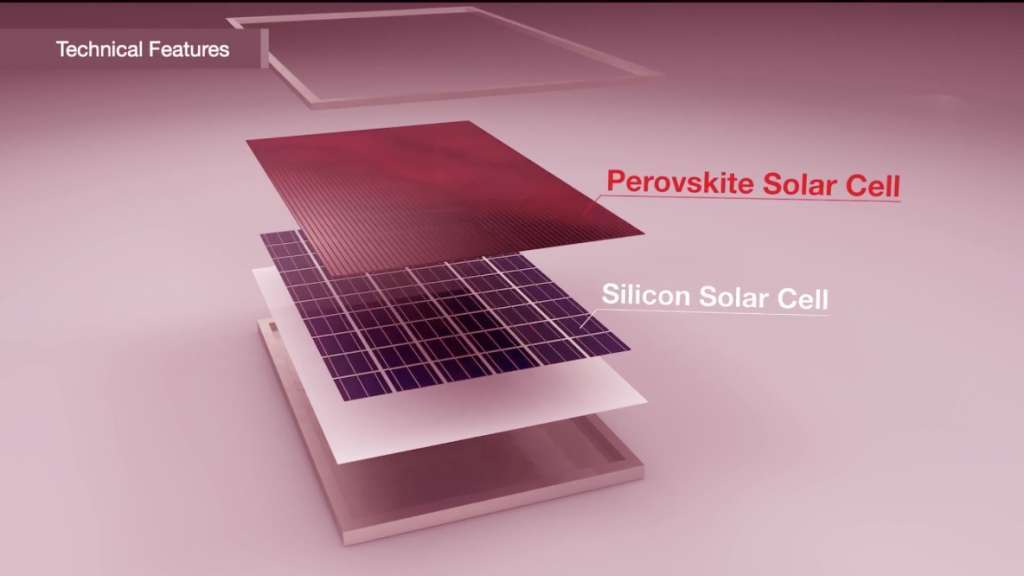-
About DaZheng
-
Solutions
-
Perovskite tandem solar cells technology
Tandem solar cells are an important strategy to push the Shockley-Queisser (S-Q) efficiency limit of single-junction solar cells, it can be lower the cost per watt.
Perovskites can be adjusted to respond to different colors in the solar spectrum by changing the material composition, and a variety of formulations have shown high performance. This flexibility allows the perovskite to be combined with another differently absorber material to deliver more energy from the same device. This is called a tandem architecture. The use of multiple photovoltaic materials enables the potential power conversion efficiency of tandem solar cells to exceed 33%, which is the theoretical limit for single-junction photovoltaic cells. Perovskite materials can be adjusted to take advantage of parts of the solar spectrum that silicon photovoltaics cannot use very efficiently, it means that they can make excellent hybrid tandem partners. It is also possible to combine two perovskite solar cells of different compositions to create a perovskite-perovskite tandem. Perovskite-perovskite tandems may be particularly competitive in mobility, disaster response, and defense operations because they can be made into flexible, lightweight devices.
At present, the certified efficiency of perovskite-crystalline silicon tandem cells has exceeded 29.0%, exceeding the highest efficiency of single-crystalline silicon cells. For the tandem cell, while achieving high photoelectric conversion efficiency, the added cost of the cell is less than 0.1RMB/W, which will greatly reduce the cost of power generation.

Related news
From December 3 to 5, 2025, Dazheng Micro-Nano has been invited to participate in the “2025 Toyota Tsusho Machinery Exhibition” with its flexible perovskite solar modules.
The 3rd Perovskite and BIPV Technology Innovation and Application Forum will be held from November 25 to 26, 2025, in Changzhou, Jiangsu Province. This forum will focus on breakthroughs in perovskite/BIPV photovoltaic building-integrated technologies, standardization systems, engineering practices, and market trends. It will bring together industry experts, corporate representatives, and scholars from research institutions to jointly explore new pathways for industry development.
Recently, Dazheng Weina (Jiangsu) Technology Co., Ltd. (hereinafter referred to as "Dazheng Weina") successfully secured over 100 million yuan in its Series A3 funding round. Notably, the "Future Creation No. 3 Fund" from SPARX Asset Management Co., Ltd.—one of Japan's largest venture capital funds—led the investment, while funds under Guoxing Investment continued to increase their stake.
DaZheng (Jiangsu) Micro Nano Technology Co., Ltd.
Tel.: 86-0511-85288876
Email: info@dazhengtop.com
Website: www.dazhengtop.com
Address: Building No. 1, Semiconductor Industrial Park, No. 298, Daijiamen Road, High-tech Zone, Zhenjiang City, Jiangsu Province, China








